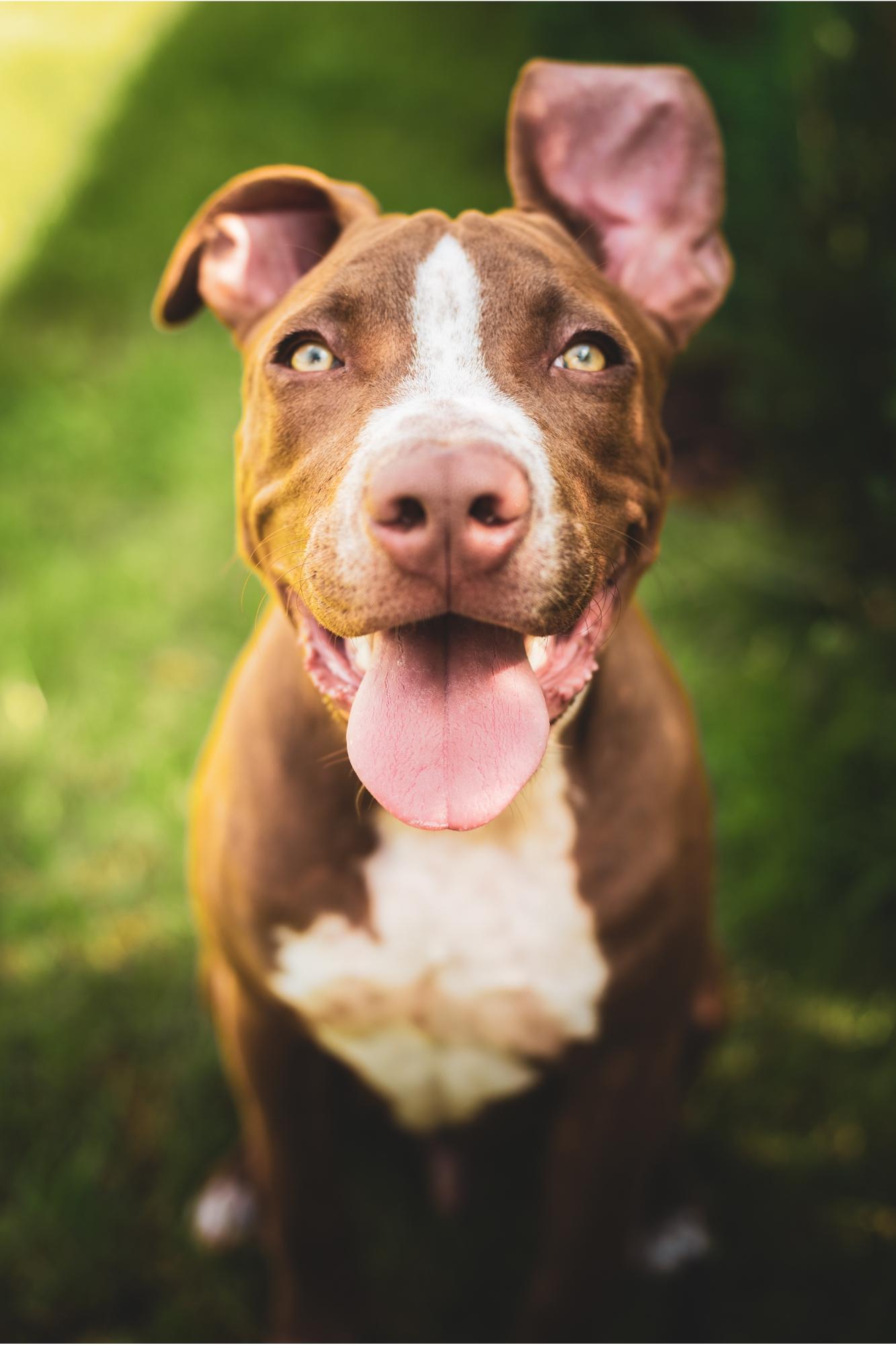Pitbull(American Pitbull Terrier)
| Group: | Terrier Group |
|---|---|
| Size: | Medium |
| Temperament: | Confident, stubborn, and fierce |
| Height: | 18-21.5 inches (male), 17-20 inches (female) |
| Weight: | 16-30 Kg (male), 14-28 Kg (female) |
| Life Expectancy: | 12-16 years |
| Origin: | U.S |
| Coat Length: | Short |
| Coat Type: | Single |
| Color: | Red Blue Brown Grey Brindle Black & White |
About
The American Pit Bull Terrier is a medium-sized, muscular dog with a short, smooth coat that comes in various colors.Pit bulls are often misunderstood. The fact is that pit bulls are extremely sociable, people-oriented pets when they are well-bred and socialised. Pit bulls are not for everyone due to their strength and high level of energy. But if you decide that a pit bull is a suitable match for you, you'll discover that they are incredibly smart and ready to learn. They frequently do well in dog sports and obedience training.
Nutrition
It's essential that you provide your Pit Bull a dog food that has meat as the first component and is high in protein and low in grains. Given that many dogs have allergies to these items, never feed your pit bull dog food that contains corn, wheat, or potatoes. Avoid foods that have a lot of fillers. A nutritious diet may prevent obesity, enhance the skin and coat condition of your dog, and guarantee a long and healthy life for your canine friend.resh water that is clean should always be accessible.
Ideal Meal Breakdown
Protein
33
Fat
22
Carbohydrates
36
Others
9
Exercise
They have easy-to-maintain coats that just need the odd bath, so they require little maintenance. The coat's lustre may be maintained by brushing with a stiff brush and wiping down with a towel. To get rid of tartar buildup and the bacteria that live inside of it, brush your dog's teeth at least twice or three times every week. If your dog doesn't wear his nails down naturally, trim them once or twice a month to avoid unpleasant rips and other issues. . Every week, you should examine his ears for redness or an unpleasant smell that might be an infection.
Grooming
American Pitbull Terriers are active, muscular dogs who need at least 60 minutes of daily activity. Outside pursuits like swimming, hiking, and playing in a fenced-in yard are excellent for stimulating the body and mind. Both training sessions and mental-challenging playtime with toys might be useful. American Pitbull Terriers benefit from regular exercise by being healthy and content.
Training
Fortunately, Pit Bulls are highly trainable and eager to please. Pit bulls are really no different from other dogs in terms of training when it comes down to it. The distinction is caused by how pit bulls are seen by the general population. If you take the time to teach your pit bull, you will have a happy, healthy family member that genuinely represents the breed.
Health
Hip dysplasia, allergies, skin infections, and congenital heart disease are few of the most prevalent health problems in American Pit Bull Terriers. Also, they can be more vulnerable to hereditary cataracts and other genetic disorders including cerebellar ataxia. In order to lower the chance of inheriting these problems, it's crucial to select a reputable breeder who does health exams on their dogs. Preventative care, good nutrition, exercise, and regular vet visits should keep your pet happy and healthy.
History
American Pit Bull Terriers have a contentious past that begins in early 19th-century England. It was first bred for violent activities like bear- and bull-baiting. It was then employed in dogfighting, which was finally prohibited in the US in the early 20th century. Because of its apparent affiliation with dogfighting, the breed encountered prejudice and legal issues in the late 20th century. The American Pit Bull Terrier was raised to be a devoted and friendly companion dog, and despite the bad image connected to its background, it became popular among American households. The American Pit Bull Terrier is still a controversial breed , but many responsible owners and breeders try to highlight its benefits as a devoted, active, and affectionate companion.
